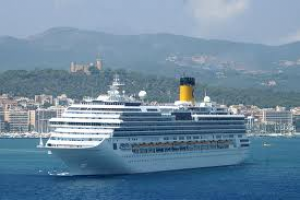Costa Concordia: Structural integrity key to success of salvage operation

Joseph Farrell, Founder and Chief Executive Officer of Resolve Marine Group, Inc., among the world’s foremost maritime emergency and disaster response, salvage and ship wreck recovery companies, says, ‘Removal of the capsized Costa Concordia cruise ship from the Tuscany coastline is one of the largest undertakings of its kind – this is a massive and complex operation which the entire world will be watching.’
For more than 30 years, Resolve Marine Group has conducted hundreds of seafaring salvage and ship wreck removal operations. His company has responded to ship collisions, vessel fires and disabled, capsized and sunken vessels. Among Resolve’s historic headline missions is the oil spill cleanup operation following BP Deep Water Horizon catastrophe in the Gulf of Mexico in 2010 and its recovery of the aircraft and human remains at the Value Jet Flight 592 crash site in the Florida Everglades.
Resolve Marine Group also owns and operates the globally recognised Resolve Maritime Academy. Since 1994, it has trained on-board firefighting techniques to more than 18,500 professional mariners from numerous major cruise lines and scores of oil tanker and cargo companies. The Academy has also trained ship firefighting to hundreds of members of land-based port firefighting units.
Recently, the Academy – which has focused primarily on training marine firefighting, hazardous materials response and vessel damage control – expanded its curricula to include navigational safety-related programs.
Farrell says, “Resolve Marine Group has worked with Titan Salvage on a number of important maritime ship wreck projects.” Titan is the Pompano Beach, Florida, USA company that was awarded the Costa Concordia project along with the Italian marine contractor Micoperi.
ADVERTISEMENT
“The Costa Concordia is a massive, international assignment that will involve hundreds of personnel including naval architects and engineers, highly experienced salvage masters and a variety of specialists such as environmental consultants,” explains Farrell.
“Based on my experience, Titan and Micoperio are staffed with qualified teams for this mission, which, I suspect, will require dispatching equipment and crews from around the globe,” explains Farrell.
“The plan to upright the capsized craft; then slowly tow it to a port near Rome could take more than a year to complete,” says Farrell. “Because of the magnitude of this project, unlike other salvage operations – and because the cruise ship is so close to land, – the Costa Concordia requires special attention to the environmental concerns and to limiting disruption to the community, which relies almost entirely on tourism for its economic livelihood.”
Farrell explains, “The salvage team has to be extremely careful not to cause adverse effects to the environment.” He says, “Rolling and then refloating the ship in one piece rather than dismantling it piece-by-piece will be quite a feat. The main concern will be to not further compromise the ship’s structural integrity, so that it can be maneuvered off the coast and to another port.”
Farrell started in the maritime salvage and recovery business with one tug boat more than three decades ago. He has grown Resolve Marine Group into a global company with offices or affiliates in major port cities on America’s Atlantic Seaboard; on the nation’s Great Lakes; its Gulf Coast and Pacific Coastline. Resolve maintains offices and affiliates around the globe.
In March 2012, Resolve Maritime Academy opened its 7,000 square foot new Simulation Training Center which includes a 240 degree, Class A Full Mission Bridge Simulator, suite of mini bridges and ECDIS lab. The Center was designed to accommodate the training needs of a Resolve client company, one the leading cruise line companies in the world.
The simulation technology can realistically simulate the depth and visually recreate the topography of every seaport in the world. It can create various weather, wave and other conditions. Simulator training is proven to advance the navigational skills of officers and crews; improve their abilities at collision avoidance; better develop the efficacy of command communications and enhance concentration and leadership abilities.
“Human error, poor decision-making and fractured command leadership are among the leading causes of most maritime disasters,” says Farrell. “This advanced new navigational training combined with a focus on human factors, and strict adherence to U.S. Coast Guard and International Maritime Organisation safety and sailing regulations is proven to save lives.”

